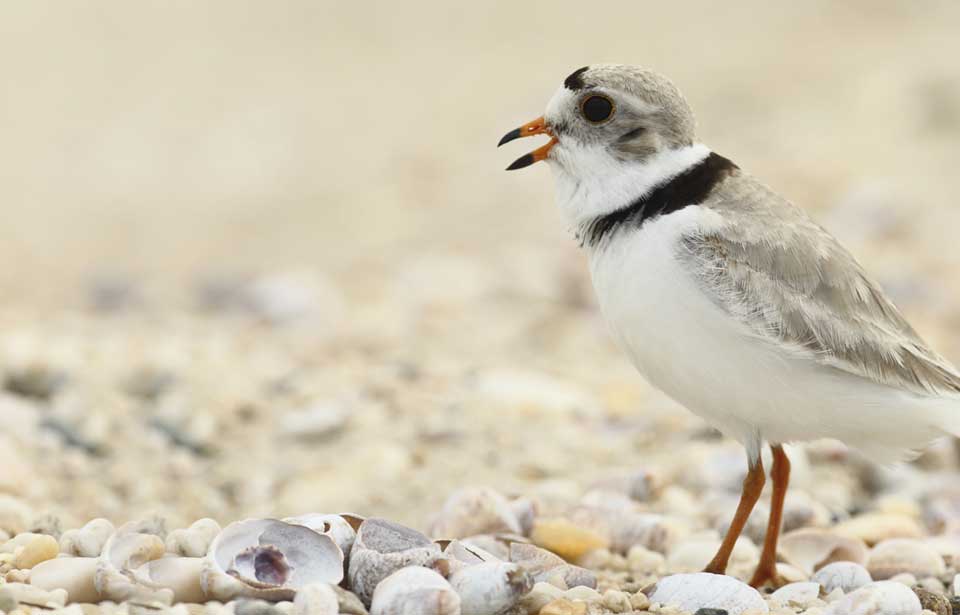Countless thousands of winged wanderers need places to rest and refuel as they commute between Canadian breeding grounds and wintering habitats in the United States and Central and South America. Their survival depends on the health of each stopover along the way.
En route from our Arctic shores to the distant coast of Suriname, innumerable semipalmated sandpipers partake in an all-you-can-eat feeding frenzy of aquatic invertebrates on the sprawling mud-flats of the Bay of Fundy. The marshy inlets of southern Saskatchewan’s Last Mountain Lake offer the endangered whooping crane a welcome break from its nearly 4,000-kilometre trek between Wood Buffalo National Park in the Northwest Territories and Aransas National Wildlife Refuge on the Texas coast. And for thousands of trumpeter swans coming down from the Yukon and Alaska, the wet fields and estuaries of British Columbia’s southern coast are a winter oasis.
Sad to say, the coastal and inland habitats most important to these avian migrants are often those hardest hit by human activities. The loss of a single stopover could mean many birds never reach their destinations. You can keep them on track by conserving migratory habitats near and far.
- Identify birds that breed in or migrate through your area. Choose one or more species, like the golden-plover or ruddy turnstone, or a whole family of ocean goers, such as sea ducks, that depend on your flyway. Is your chosen species listed as endangered, threatened, or vulnerable? If so, why?
- Map out the flyway. Include breeding and wintering grounds, migratory stopovers, habitat hot spots, and protected areas. Learn everything you can about coastal and inland habitats along the way. What part of your area does the species use? Does that site need protection? Consult with experts, including field-naturalist, fish-and wildlife, and bird-watching groups, plus government and non-governmental agencies.
- Conserve key habitats along the flyway.
- Protect imperilled habitats. East Coast breeding beaches used by the endangered piping plover are regularly overrun by vacationers, pets, and all-terrain vehicles, which crush this shorebird’s well camouflaged eggs. West Coast wintering sites for such sea ducks as surf scoters, buffleheads, and oldsquaws are threatened by oil spills, coastal developments, chemical contamination, and other human threats. Volunteers are monitoring and protecting these seafarers’ breeding and wintering areas. You, too, can promote the conservation of habitat hot spots. (See “Stand on Guard for Aquatic Habitats)”.
- Plant native cover and food crops. Check with local wildlife biologists, naturalists, wildlife groups, or other experts to find out what plant species would be ideal. Never introduce exotic plants that could muscle out other species. Look for fast-growing plants that are compatible with your area’s soil and climate, provide wildlife with food and cover, and can survive with little or no maintenance.
- Do additional habitat projects. You’ll find a wealth of ideas to help you conserve a flyway on this and other CWF’s Web sites: for example, you could join a biodiversity field study; participate in the Sea Duck Joint Venture; revitalize a wetland; build and install nesting boxes for buffleheads, goldeneyes, and other sea; put up nesting structures for great blue herons; promote the establishment of protected habitats; prevent marine debris and pollution; provide supplemental plantings in beaches, dunes, and salt-marshes; build nesting platforms for ospreys; and plant a vegetation buffer along a shoreline.
- Get on the “information flyway”. Two-thirds of Canadian shorebirds migrate from Arctic breeding grounds to Central and South America. There, rapidly expanding human populations are paving and plowing over the wetlands that shorebirds use as stopover and wintering habitats. Many other migrants face similar threats beyond our borders, including exposure to DDT, a toxic pesticide banned in Canada. You can conserve migratory birds and their habitats, even from afar.
- Team up with your peers in other regions and countries in the Western Hemisphere to share information, discuss ocean issues, and collaborate on projects that conserve breeding, migrating, and wintering habitats along the same flyway.



